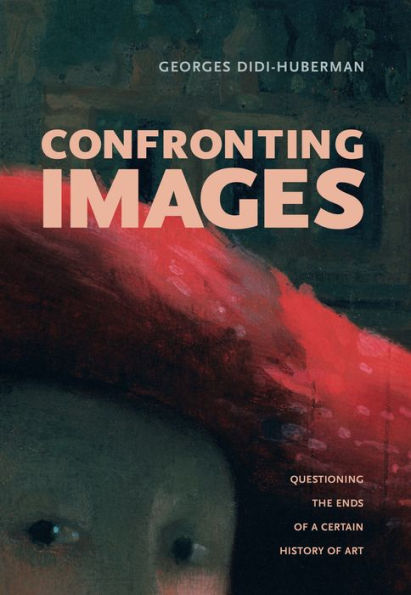Table of Contents
Contents
List of Illustrations
Translator’s Preface
Question Posed
When we pose our gaze to an art image (1) Question posed to a tone of certainty (2) Question posed to a Kantian tone, to some magic words, and to the status of a knowledge (5) The very old requirement of figurability (7)
1. The History of Art Within the Limits of Its Simple Practice
Looking intently at a patch/whack of white wall: the visible, the legible, the visual, the virtual
The requirement of the visual, or how incarnation “opens” imitation
Where the discipline is wary of theory as of not-knowledge. The illusion of specificity, the illusion of exactitude, and the “historian’s blow”
Where the past screens the past. The indispensable find and the unthinkable loss. Where history and art come to impede the history of art
First platitude: art is over . . . since the existence of the history of art. Metaphysical trap and positivist trap
Second platitude: everything is visible . . . since art is dead
2. Art as Rebirth and the Immortality of the Ideal Man
Where art was invented as renascent from its ashes, and where the history of art invented itself along with it
The four legitimations of Vasari’s Lives: obedience to the prince, the social body of art, the appeal to origins, and the appeal to ends
Where Vasari saves artists from oblivion and “renames/renowns” them in eterna fama.
The history of art as second religion, devoted to the immortality of ideal men
Metaphysical ends and courtly ends. Where the crack is closed in the ideal and realism: a magic writing-pad operation
The first three magic words: rinascità, imitazione, idea (89). The fourth magic word: disegno. Where art legitimates itself as unified object, noble practice, and intellectual knowledge. The metaphysics of Federico Zuccari. Where the history of art creates art in its own image
3. The History of Art Within the Limits of Its Simple Reason
The ends that Vasari bequeathed to us. Simple reason, or how discourse invents its object
Metamorphoses of the Vasarian thesis, emergences from the moment of antithesis: the Kantian tone adopted by the history of art
Where Erwin Panofsky develops the moment of antithesis and critique. How the visible takes on meaning. Interpretive violence
From antithesis to synthesis. Kantian ends, metaphysical ends. Synthesis as magical operation
First magic word: humanism. Where object of knowledge becomes form of knowledge.
Vasari as Kantian and Kant as humanist. Powers of consciousness and return to the ideal man
Second magic word: iconology. Return to Cesare Ripa. Visible, legible, invisible. The notion of iconological content as transcendental synthesis. Panofsky’s retreat
Farther, too far: the idealist constraint. Third magic word: symbolic form. Where the sensible sign is absorbed by the intelligible. The pertinence of function, the idealism of “functional unity”
From image to concept and from concept to image. Fourth magic word: schematism. The final unity of synthesis in representation. The image monogrammed, cut short, made “pure.” A science of art under constraint to logic and metaphysics
4. The Image as Rend and the Death of God Incarnate
First approximation to renounce the schematism of the history of art: the rend. To open the image, to open logic
Where the dream-work smashes the box of representation. Work is not function. The power of the negative. Where resemblance works, plays, inverts, and dissembles. Where figuring equals disfiguring
Extent and limits of the dream paradigm. Seeing and looking. Where dream and symptom decenter the subject of knowledge
Second approximation to renounce the idealism of the history of art: the symptom.
Panofsky the metapsychologist? On questioning the denial of the symptom. There is no Panofskian unconscious
The Panofskian model of deduction faced with the Freudian paradigm of over-determination. The example of melancholy. Symbol and symptom. Constructed share, cursed share
Third approximation to renounce the iconographism of the history of art and the tyranny of imitation: the Incarnation. Flesh and body. The double economy: mimetic fabric and “upholstery buttons.” The prototypical images of Christianity and the index of incarnation
For a history of symptomatic intensities. Some examples. Dissemblance and unction. Where figuring equals modifying figures equals disfiguring
Fourth approximation to renounce the humanism of the history of art: death. Resemblance as drama. Two medieval treatises facing Vasari: the rent subject facing the man of humanism. The history of art is a history of imbroglios
Resemblance to life, resemblance to death. The economy of death in Christianity: the ruse and the risk. Where death insists in the image. And us, before the image?
Appendix: The Detail and the Pan
The aporia of the detail
To paint or to depict
The accident: material radiance
The symptom: slippage of meaning
Beyond the detail principle
Notes
Index



